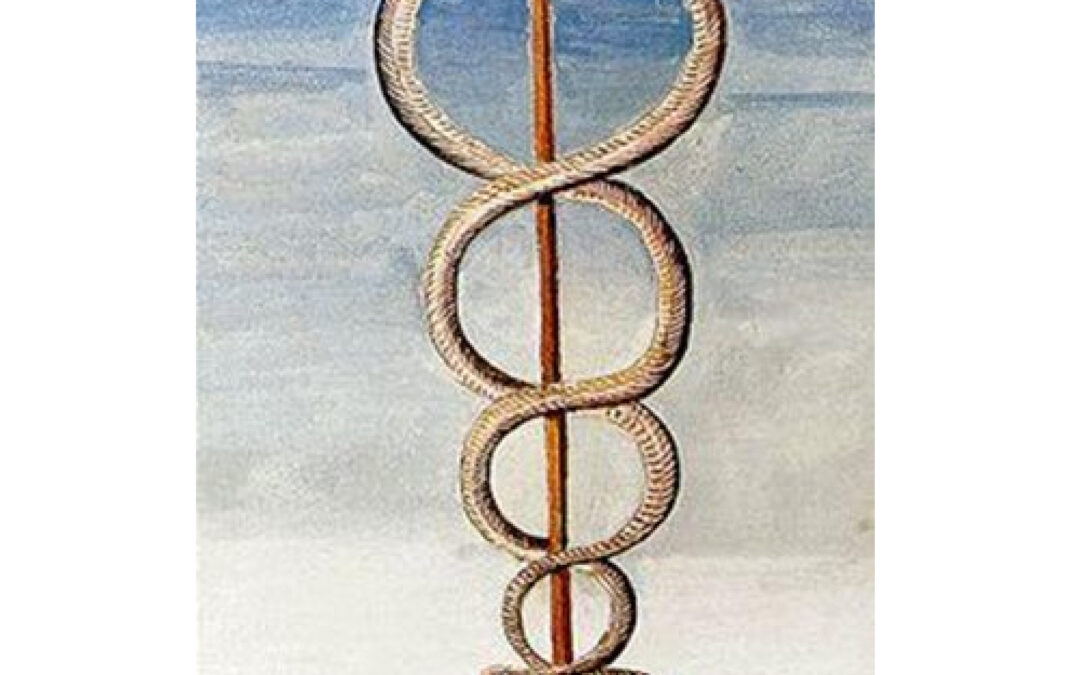Recall the story of Moses and the bronze snake. Regardless of how you read the Hebrew Scripture, literally or as truth-revealing-myth, the story is archetypal. There is an underlying universal truth. The Israelites were impatient on their journey, complaining against God, venomous in their condemnation of the God of rescue. With serpentine tongues, like the misleading snake in the garden, they accused the Divine of deceiving them in order to bring them to their death in the desert. So, the Lord their God sent snakes to bite them. That got their attention!
Then, the Lord told Moses to make a replica of the very “fiery” (poisonous) serpents that had bitten them, to fashion it out of bronze and put it on a pole. They were to look to this divinely commissioned replica and live.
What’s going on here? I’m asking that question from a psychological/psychotherapeutic perspective.
In the story, God takes the very thing that represented their own striking tongues, the thing that bit them, and transforms it, casting it in permanent but immovable and harmless bronze. The symbol stands as an ensign of a different relationship with God. It signals trust rather than cynicism, hope rather than despair, new beginnings rather than dead ends. It warns and awakens them to listen for future hissings from the shadow side of their collective soul, never to charm them again. Here’s the psychological/spiritual/psychotherapeutic application.
How many times have I heard those addicted to alcohol or drugs or anything else tell of how the vice that bit them woke them up, that the poison had been alchemically transformed to be their medicine, that their “sin” had become the impetus for their growing “sanctification?”
What was the Israelites’ need in the desert? It was to have safety and to have hope; hope is the conviction that meaning actually resided within the day-to-day movement forward on the journey. They lost sight of that and began to focus on their own fearful apprehension, and it poisoned them. They were looking for a new and renewing “internal state.” Addictions usually begin with a desire for such a state. The problem is with the solution of how to achieve that state. The same could be said for just about any calculated wrong choice. The desire for a change of state was good; the method of achieving it was not.
Listen to the message behind the hissing negativity or call to substance abuse or any “quick fix.” It calls us back to our truest self and most authentic needs. It calls us back to our breath and heart. It calls us to silence and acceptance of what is, even as we move forward on the journey. YOU are enough, you and the Greater Beingness in which we live, move, and have our being–that Beingness that lives in you. Listen to that voice, trust, and LIVE.



Recent Comments